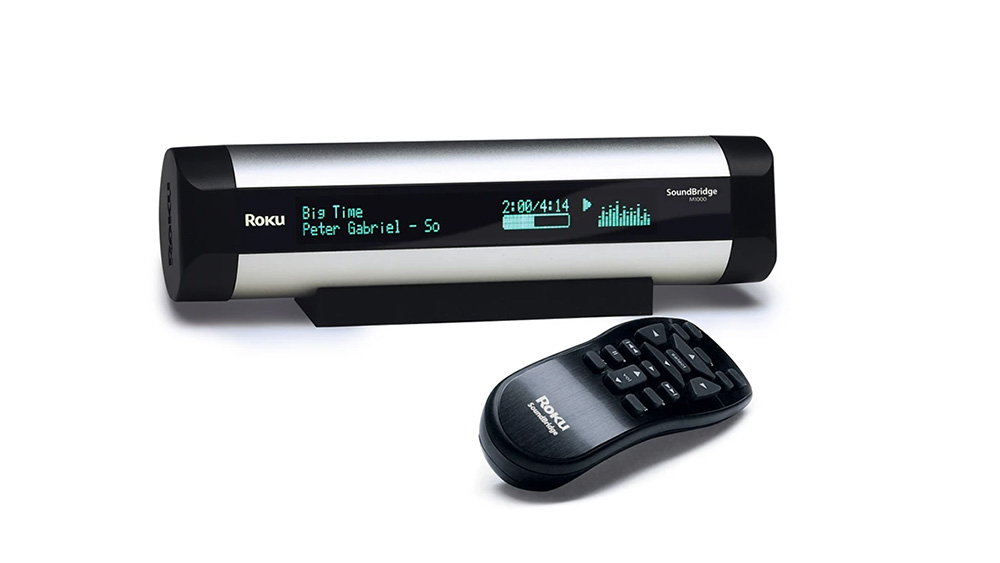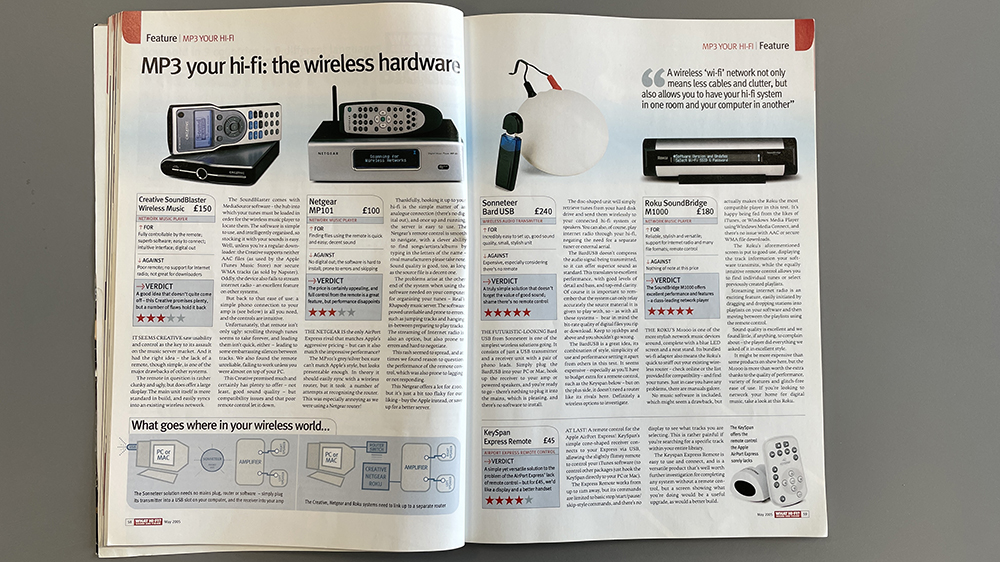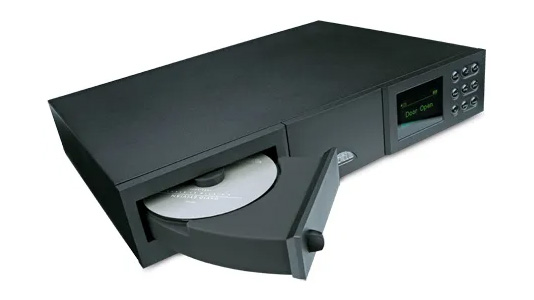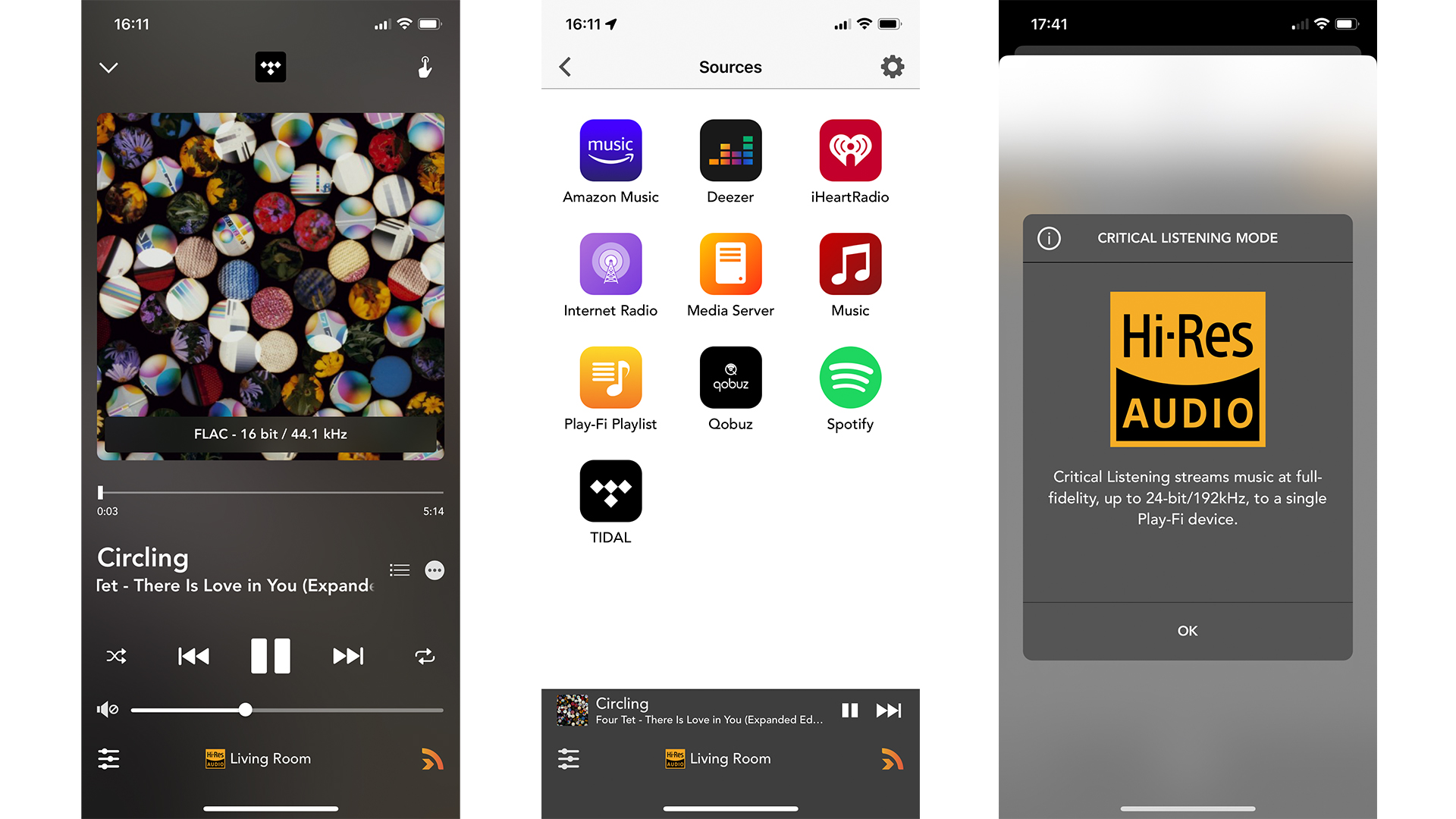A music streamer retrospective: from primitive pre-Spotify players to modern-day multi-taskers
Oh boy, look how far we've come

It’s easy – instinctive, even – to think that music streaming, something so instrumental in the world’s consumption of music today, kicked off when Spotify gained global traction around 15 years ago. Streaming certainly kicked on as the pioneering green giant found its way into over 15 million homes in its formative years through its free (around 75 per cent) and paying (the rest) users, as if Lionel Messi had given the technology his biggest welly. But wireless streaming in a home audio environment had indeed been around for some time by then, albeit in a form largely unfamiliar today.
The formative years
Hints of a forthcoming streaming revolution were writ large in the early noughties. As early as 2003, Roku had released its first SoundBridge music streamers, the miniature M1000 (pictured top) and larger M2000, capable of transmitting music stored on your computer, as well as internet radio, to a system in any room of your house that had a network connection. Direct playback from iTunes and Windows Media Connect was supported, as were online music services Rhapsody and Napster.
In a 2005 What Hi-Fi? Group Test of such fledgling wireless devices – headlined ‘MP3 your hi-fi’ (not today, thank you!) – we called the then-£180 (about £350 today) SoundBridge M1000 “a class-leading network player”. “Streaming internet radio is an exciting feature,” we said, “sound quality is excellent and we found little, if anything, to complain about”. The pricier Sonneteer Bard USB – a two-piece transmitter and receiver – was an early sign of a wireless world simplified.
In 2004, Apple released the AirPort Express wi-fi station, which could be used as an audio streaming device thanks to its line-level and optical outputs and the debut of AirPlay (then ’AirTunes’). And by the time Spotify launched a few years later, Sonos had won three consecutive What Hi-Fi? Awards for its BU130 'Digital Music System’, with us labelling it ‘the hottest thing to hit hi-fi in years'. The Zone Player at the system’s core was an amplifier and wireless connector that plugged into a computer and pair of speakers to make up one full system, with the ability to beam music wirelessly to another (this time receiving-only) Zone Player in the bundle to make up a second system. Soon came Napster integration, eradicating the need for a PC.

High-end hi-fi brand Linn in 2007 launched the Klimax DS music player (‘DS’ stood for ‘Digital Streaming’), the (self-described) ‘first authentic hi-fi product to stream digital music over a standard home network'. Indeed it could play back 24-bit/192kHz studio master-quality recordings as a digital stream over a home network, with the company’s Linn Records website offering such 24-bit Studio Master downloads for online purchase. By 2009, Linn had four DS streamers, the sales of which by then had "dramatically surpassed" those of its CD players, which it would consequently soon cease production of. And by 2012, just as Spotify hit 20 million users globally, Linn had ten streamers in its arsenal… and even a streaming sideboard.
In 2009, Naim – another early adopter in the hi-fi realm – won the first What Hi-Fi? Award given to an audio streaming product, for its Naim Uniti – a 'CD receiver with DAC, iPod-connectivity, internet/DAB/FM radio and wireless music streamer thingy' as we initially called it… before deciding on ‘CD/Wi-Fi receiver’.
Logitech's new Squeezebox Radio from that same year became the first internet-only radio we'd class as a serious rival to same-priced DAB alternatives, with access to Deezer, Last.fm and Napster too.
The latest hi-fi, home cinema and tech news, reviews, buying advice and deals, direct to your inbox.
All milestones for the wireless streaming era; milestones that now seem to belong to a bygone era.

Feature progression – and subsequent parity
In those days, before the heyday of the streaming service apps we use today, streamed music predominantly came from a connected (physically or wi-fi’d) computer, from servers like Apple’s iTunes, a Network Attached Storage (NAS) device, or a plug-in built into the streamer (the early Linns, for example, offered radio plug-ins from the BBC and others). Of course, fast forward 15 or so years, and today’s music streamers offer direct access to umpteen music service apps, from Spotify to Soundcloud, Apple Music to Amazon Music, Tidal to TuneIn, and everything in between. Often via one control app that is heaps more intuitive and reliable than what you got back then, at the convenient touch of your phone screen.
There are a lot of boxes to tick, and with in-app control options courtesy of technologies like Spotify Connect and Tidal Connect, plus voice control integration everywhere, it’s hard to imagine how much more convenient music streaming could get. Unless the ecosystem was boiled to one single service and platform that all streaming hardware played ball with, no Big Tech politics involved – but let’s be realistic!
It’s actually reached a point now whereby there is more or less feature parity across the price spectrum of budget streamers, with all these boxes being increasingly ticked by hardware. There are discrepancies, of course – mostly when it comes to hit-or-miss support of MQA, Chromecast, Bluetooth and DSD, we find – but you’re almost always getting UPnP playback, access to The Big 4 (Spotify, Amazon Music, Tidal and Qobuz), hi-res audio support up to at least 24-bit/192kHz, compatibility with AirPlay, Spotify Connect and internet radio platforms, and perhaps most universally the choice between Ethernet and wi-fi.

Performance growth in both directions
Streaming performance has evolved with features (and user experience, at that), and arguably not as much as it has in the past few years. I remember some years ago when the What Hi-Fi? reviews team sat around a particular budget music streamer when the category had become more established, feeling disappointed at the seeming quality ceiling at that end of the market. Bluesound and Cambridge Audio had the best early stabs, but the better budget CD players sounded superior.
Recently, there have been more than a few examples of great headway being made where sound quality is concerned – and at both ends of the market. It isn’t surprising that Linn is behind one at the higher end, considering its unprecedented streaming heritage in hi-fi; nor is it particularly shocking that Cambridge Audio is one at the other, given its commitment to, and consistency of, streaming performance over the past decade in particular.
Cambridge Audio’s new MXN10 represents the biggest leap in performance at the budget end of the market in years, while the even newer Wiim Pro Plus (pictured below) is the first streamer as affordable as £219 / $219 / AU$339 that we’ve felt we can wholeheartedly recommend.

At the other end, Linn’s Klimax DSM (now iterations on from the 2007 original!) “sets new standards for high-end streamers” with “second to none” insight, clarity and dynamic expression, while the dCS Lina network DAC is another benchmark product that flies the flag for streamers being a choice modern-day source. In both respects, streaming chips and platforms, and the effectiveness with which hi-fi manufacturers can implement them in their designs, have come on leaps and bounds in recent years.
In the blink of an eye in the hi-fi world, streaming has evolved from majoring mainly in convenience to having the potential to be the highest-quality music solution in history. Where will it go next? Some say AI will improve user experiences and influence music creation, others say immersive 3D audio will get a stranglehold on music consumption. Whatever streaming’s future, it’s hard to imagine it’ll progress as much in the next 20 years as it has in the last, because it’s been one heck of a ride.
MORE:
Our expert pick of the best music streamers you can buy
How to add a music streamer to your hi-fi system
This superb streaming system has modern smarts and a surprisingly affordable price

Becky is a hi-fi, AV and technology journalist, formerly the Managing Editor at What Hi-Fi? and Editor of Australian Hi-Fi and Audio Esoterica magazines. With over twelve years of journalism experience in the hi-fi industry, she has reviewed all manner of audio gear, from budget amplifiers to high-end speakers, and particularly specialises in headphones and head-fi devices.
In her spare time, Becky can often be found running, watching Liverpool FC and horror movies, and hunting for gluten-free cake.
